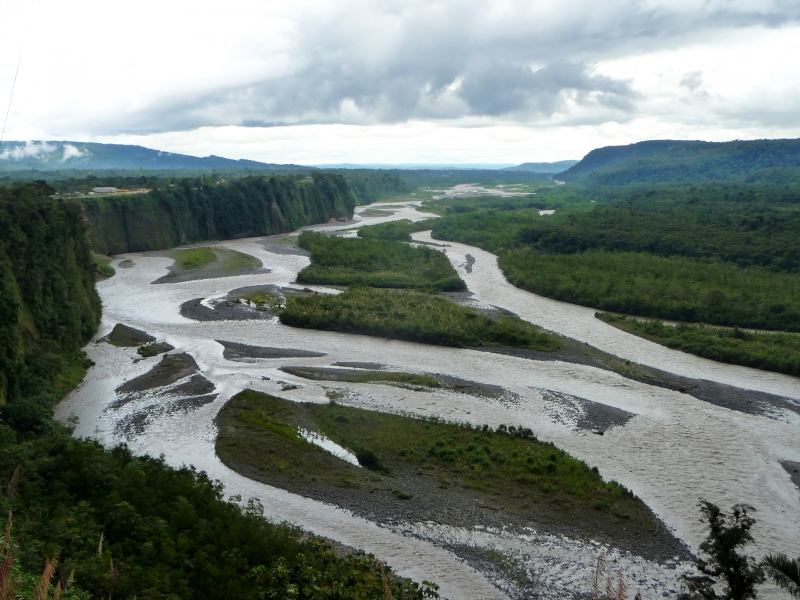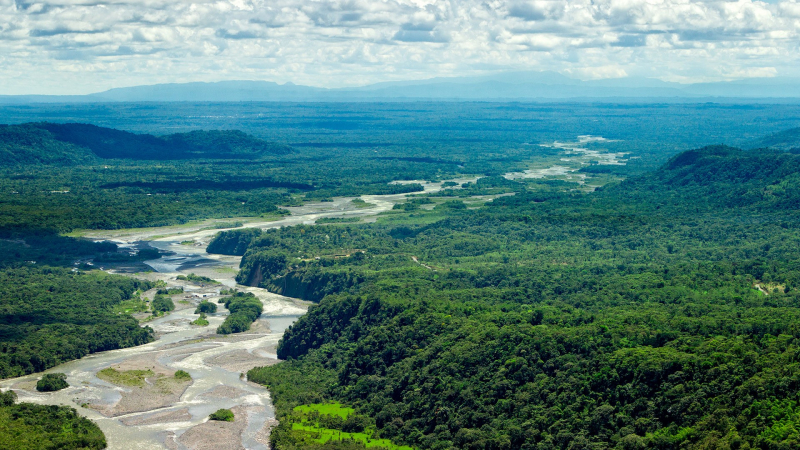Pastaza

The Pastaza River (Spanish: Río Pastaza, historically known as the Sumatra) is a major tributary of the Marañón River in South America's northeastern Amazon Basin.
Its sources are in the Ecuadorian province of Cotapaxi, where it flows from the northern slopes of the volcano Cotopaxi as the Patate River. The Patate runs south and joins the Chambo River approximately upstream from the village of Banos de Agua Santa, just north of the volcano Mount Tungurahua, to form the Pastaza in Tungurahua Province. It is dammed seven kilometers east of Baos for the Agoyán hydropower project, which has formed a silty lagoon near the community of La Cienega. The Agoyán dam was built in that area primarily to protect the famed Agoyán Falls, which are about 5 kilometers downstream. Following the waterfall, the river enters a valley with very fast whitewater with class-4 rapids; it is frequently used for whitewater rafting, however, it is not considered to be of the same caliber as the Tena River and so less popular for the sport.
The Pastaza runs almost straight east from its confluence with the Chambo for about 275 kilometers (171 miles) until it is joined by the Topo River. The Troncal Amazonas highway borders the river from Baos to Puyo, going through seven tunnels and four significant waterfalls that are important tourist sites for many Ecuadorians (the most popular being Agoyán and Pailón del Diablo). The Pastaza River enters the province of Pastaza just before the town of Santa Inez, where it defines the border between that province and Morona-Santiago. The river departs the mountains around Mera and runs through a large valley, getting wider and shallower as it approaches Puyo. The river gets braided and meanders after Shell, producing oxbows and sloughs along its path over the Amazonian lowlands.
Length: 441 miles










